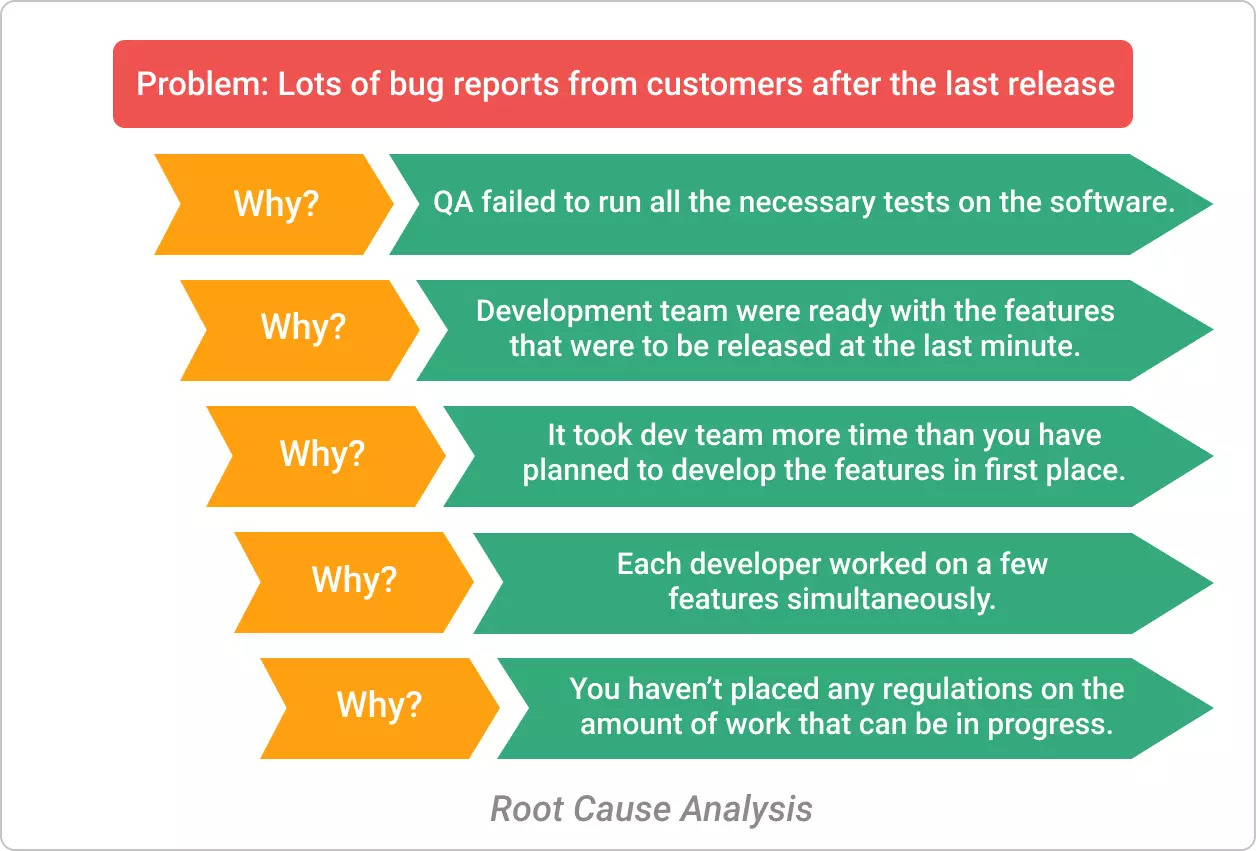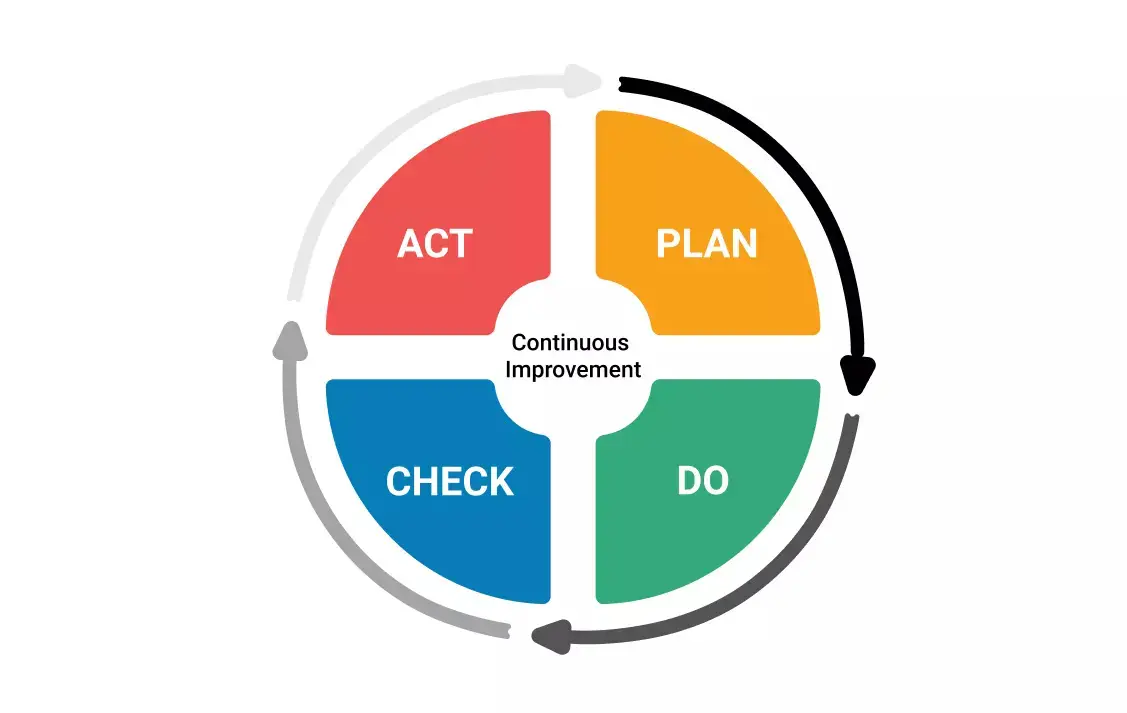What is Continuous Improvement?
The continuous improvement process, which in English is called Continual Improvement Process or Continuous Improvement, means constantly optimizing products, services, and operations. This effort can be followed by gradual progress over time or by suddenly moving the boundaries of progress.
What is the continuous improvement process?
The continuous improvement process, which in English is called Continual Improvement Process or Continuous Improvement, means constantly optimizing products, services, and processes. This effort can be followed by gradual progress over time or by suddenly moving the boundaries of progress. Delivery processes (assessed by the customer) are measured and improved in efficiency, effectiveness, and flexibility. Some view continuous improvement processes as a meta-process (a process that can be in the background and describe other processes).
Kaizen approach
Some successful implementations use an approach called Kaizen. Kaizen in Japanese is translated as:
Kai means “change,” and Zen means “good.”This method became famous from the book by the Japanese author Imai called “The Key to Japan’s Competitive Success,” published in 1986.
- Feedback: The main rule of CIP is to check the procedures’ reflection (to oneself).
- Efficiency: CIP aims to identify, reduce, and eliminate inefficient procedures.
- Evolution: CIP emphasizes gradual, continuous steps rather than giant steps.
The main features of Kaizen are:
- Improvements are not based on radical changes that might come from research and development but on small changes.
- Since the ideas come from the employees, they are less likely to be too different and, therefore, easier to implement.
- Minor changes are less likely to require significant investments.
- Ideas come from the workforce’s talent instead of using research, consultants, or tools, which can be very expensive.
- All employees should be constantly looking for ways to improve their performance.
- It can encourage employees to feel ownership of experts and strengthen teamwork, resulting in greater work motivation.
These elements are more than the tactical elements of CIP. More strategic features include deciding how to increase the value of the output of the customer service process and how much flexibility is valuable in adapting to changing needs.
PDCA approach
The Plan-Do-Check-Act model is one of the popular approaches to achieving continuous improvement.
Also known as the Deming Circle (named after its founder, the American engineer William Edwards Deming), it is a never-ending cycle aimed at contributing to further improvement based on the results achieved.
It was first created for quality control, but it became a tool for continuous improvement over time.
In the planning stage (Plan), you must determine the goals and processes necessary to deliver the results per the expected output (destination).
Setting output expectations is critical to continuous improvement because the accuracy and completeness of objectives are a significant part of the improvement process.
It is recommended to start on a small scale to test the effects of this approach.
The second step is to do. This is simply because you have to implement what you determined during the planning stage of the process.
In the third step, after you have completed your goals, you should check what you have achieved and compare it with what you expected. Collect as much data as possible and consider improving your process for better results next time.
If the analysis shows that you have improved from your previous project, the standard will be updated, and you should do better next time.
If you have failed to improve or even achieved worse results than before, the standard remains the same as it was before you started your last project.
Root Cause Analysis technique

Root Cause Analysis (RCA) is a technique that allows you to achieve Kaizen by showing the root causes of your process problems.
It is an iterative exercise that analyzes the factors that caused it until you get to the root of the negative effect. It can only be considered root if the final negative impact is prevented forever after removing the cause.
To apply RCA for continuous improvement, you must thoroughly analyze the problem.
For example, let’s say you lead a software development team. When you released your latest product update, your support team was bombarded with bug reports from customers.
You start looking for the root cause from the top of the problem.
You examine how your QA team allowed this to happen and realize they failed to run all the necessary tests on the software.
Afterward, you look at the cause and realize that the development team gave them features that were supposed to be released at the last moment.
They are examining why; you’ll find that the developers completed most of the features before submitting them to QA.
Investigating why, you realize that your development team spent more time than you planned on developing the features in the first place.
Investigating the reason behind it, you realize that your team was inefficient because each developer worked on multiple features simultaneously. So instead of giving QA features one by one, they sent a batch that was too big to process in the short term.
Analyzing why this happened, you realize that you didn’t set any regulations on the amount of work that could be going on simultaneously, and you didn’t ensure the uniformity of your process.
At this point, you conclude that roughness is the root cause of the wastage problem.
To achieve continuous improvement, we suggest analyzing the root cause of each problem and testing solutions.
Often, problems can be much more complex than you think, and RCA needs to be repeated several times before the adverse effect is prevented from recurring.

